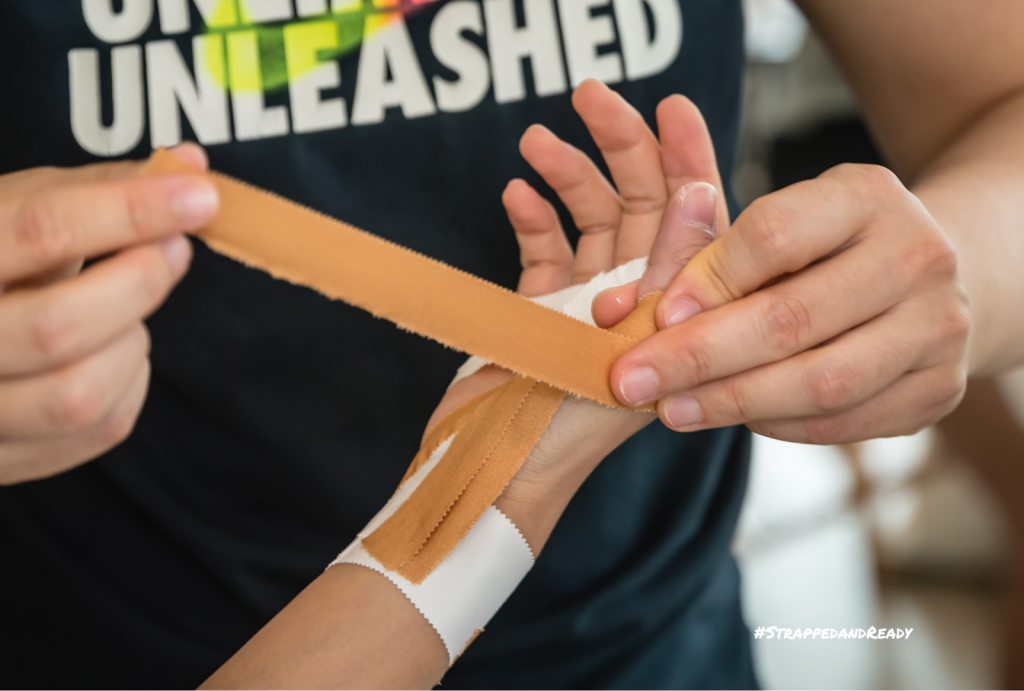
Taping is one of the therapeutic involvements practiced by physiotherapists and rehabilitation team members. Sports injuries and different kinds of clinical disorders are prevented or cured by taping techniques. Frequent types of tape and their related application approaches are obtainable. Kinesiology tape (KT), Dynamic tape (DT), rigid tape, micro-pore tape, athletic tape, and many other types are available to manage or rehabilitate injuries.
Brief details on five sports-taping techniques used by athletes and physiotherapists:
Photo: WSE Women’s Football Team
Types of tape you need for ankle strapping:
2. Knee Taping:
Photo: Phoenix Touch
Types of tape you need for knee strapping:
3. Shoulder Taping:
Types of tape you need for shoulder strapping:
4. Wrist Taping:
Detailed Version with Videos of Thumb Hyperextension Variation
Types of tape you need for wrist strapping:
5. Elbow Taping:
Types of tape you need for elbow strapping:
It’s crucial to apply sports tape correctly to avoid restricting blood flow or causing additional injury. Always seek advice from a healthcare professional or a certified physiotherapist to be sure about the taping technique or if it’s suitable for your specific situation. Additionally, each person’s anatomy and requirements may differ, so a personalized approach is often best.
Visit Pillar Sports Shop for more tape options suitable to your needs.
Protect. Prevent. Perform.
#strappedandready #pillarsports #sportstapingstyles #tapingtechniques
References:
Jain, P. THE IMMEDIATE EFFECTS OF DYNAMIC TAPING ON ENDURANCE, PAIN, DISABILITY AND MOBILITY IN SPORTS PERSON WITH NON-SPECIFIC LOW BACK PAIN.
Ankle Taping: Tape Series: Part 1 Ankle Strapping
Knee Taping: Tape Series: Part 2 Knee Strapping. (MCL)
Shoulder Taping: Tape Series: Part 3 Shoulder Strapping
Wrist/Hyperextension Thumb Taping: Tape Series: Part 5 Thumb Hyperextension Strapping
Elbow Taping: Tape Series: Part 4 Elbow Strapping